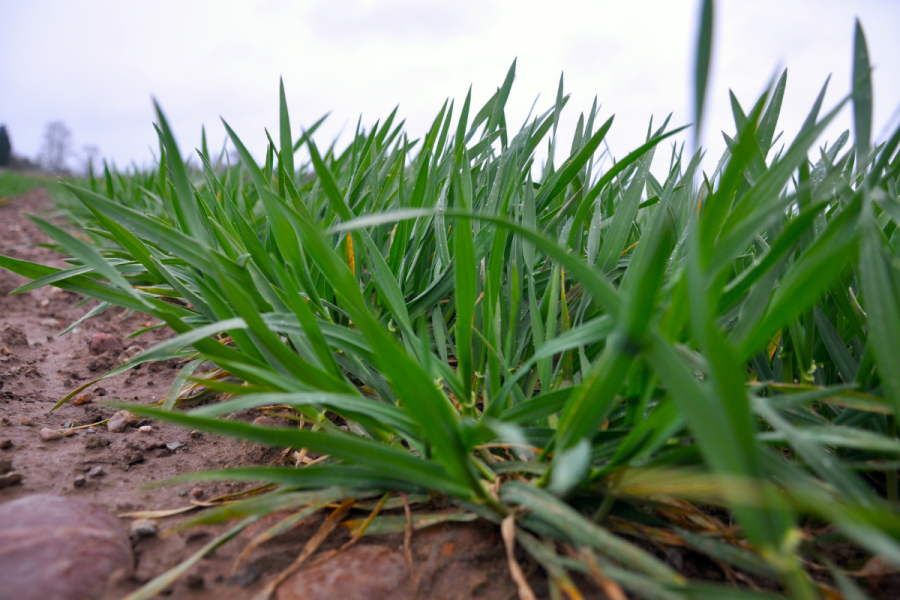New trials conducted by ADAS indicate that hybrid barley has a lower economic optimum for nitrogen, offering growers the possibility of applying less and maintaining yields. CPM finds out more.
These results should provide a level of confidence to growers who are looking to make modest reductions in their N rates.
By Lucy de la Pasture
Hybrid barleys have long been noted for their larger rooting systems and competitiveness, which has been made good use off in blackgrass situations. But could it be that these larger root systems are also better at scavenging nutrients from the soil?
With nitrogen use under close scrutiny since its cost has risen spectacularly this year, the nutrient use efficiency of plants has become a much more meaningful metric as growers seek to apply no more nitrogen than is absolutely necessary.
Syngenta started to look at nitrogen use efficiency (NUE) as a potential to reduce the carbon footprint, with NUE a measure of both nitrogen uptake and utilisation.
New independent research has shown hybrid barley with reduced N input can deliver similar yields to conventional winter barley receiving a higher, standard dose. Conducted by ADAS, the research compared two hybrid barley varieties – SY Kingsbarn and Bazooka –and two conventional two-row winter feed barley varieties at six different N doses which ranged from 0-360 kg/ha. The trials took place on a sandy clay loam soil, with plots drilled in mid-October.
The work formed part of a larger programme of Syngenta evaluations into hybrid barley’s benefits that may help growers respond to sustainability challenges – including high fertiliser prices, a need to manage grass weeds sustainably, and a need to produce yields reliably for food security.
ADAS project director Dr Sarah Kendall led the research which aimed to understand whether hybrid barleys show altered responses to N fertiliser to conventional winter barley varieties and if hybrid barleys exhibit improved nitrogen use efficiency over conventional varieties.
“There are increasing drivers – from economics and carbon costs –to become more efficient with N use and the impact of modest reductions in N rate on yield are often smaller than expected,” she says.
Looking at the results, Sarah highlights that at 200kgN/ha – a dose potentially used if pushing winter feed barley for yield – both hybrids significantly outyielded their conventional counterparts, producing 9.92 and 9.71t/ha versus 8.19 and 8.13t/ha for the conventional varieties. “The hybrids produced more grains/m2,” says Sarah.
Dose response curves revealed a similar trend at a more standard 180kgN/ha, but what was also relevant was the economic optimum N rate for the varieties, she adds.
“Using a standard breakeven ratio for N fertiliser of 5:1, the data analysis revealed the hybrids required in the region of 65kg/ha less N to achieve a similar yield to one of the conventional varieties,” says Sarah.
“The second conventional variety had an economic optimum N rate that was actually lower than the hybrids, but it yielded around 1t/ha less. These results should provide a level of confidence to growers who are looking to make modest reductions in their N rates with hybrid barley in response to cost and sustainability pressures.”
Across a wide range of N rates in the trial, the hybrids also showed improved nitrogen utilisation efficiency over the conventional varieties, reports Sarah, indicating that for the same amount of N taken up by the crop, the hybrids produced more yield. She also highlights that the results represent the first year of trials so further work is needed to assess results across seasons.
According to Syngenta seeds technical expert, Ben Urquhart, these results could aid growers’ variety decisions this autumn – with the ability to apply less N while maintaining barley yield not only offering financial savings given high fertiliser prices, but also potential environmental benefits from a reduced carbon footprint.

The data analysis revealed the hybrids required in the region of 65kg/ha less N to achieve a similar yield to one of the conventional varieties, says Sarah Kendall.
He suggests growers prioritise early N applications for hybrid varieties to maximise their sink capacity, with N split in applications of 30% at GS25, then 50% at GS31, followed by 20% or a 50/50 split across the two earlier timings.
The ADAS work has been backed up by further research in Germany, which has also shown hybrid barley to produce a yield benefit over conventional barley with reduced N, he adds.
“Hybrid barley is known for its hybrid vigour, and vigorous roots are associated with improved nutrient uptake,” says Ben. “Hybrid root systems are significantly larger than those of conventional varieties, with SY Kingsbarn shown to have a 20% higher root mass than a two-row barley in previous ADAS work – providing a much larger surface area to scavenge nutrients from the soil.”
But hybrid vigour is also associated with another benefit of hybrid barley – its ability to suppress certain grassweeds by both above and below ground competition, he says. “It’s another area of sustainability we’ve been researching, for example, vigorous roots compete with blackgrass roots.
“Following early trials that showed hybrid barley to be more competitive than winter wheat against blackgrass, more recent work has also shown hybrid barley to be more competitive against ryegrass and brome species – over and above both winter wheat and conventional two and six-row varieties of winter barley.
“We know hybrids are particularly beneficial in a blackgrass situation, reducing head numbers by +20/m2. With ryegrass and brome the same applies, with fewer tillers, smaller ears and reduced seed return due to the competitive effects of the hybrid crop.
“Reduced weed seed return to the soil from surviving grassweeds is a key part of sustainable grassweed reduction. However, there are also shorter-terms benefits, and latest calculations reveal the yield benefit alone from blackgrass suppression with hybrid barley could be worth more than £50/ha.”
Even where grassweeds aren’t present, hybrid barley has long been recognised for high yields, says Syngenta hybrid barley marketing manager, Sarah Hughes. “In 2022, there are 11 hybrid varieties on the AHDB Recommended List, with one in five feed barley crops being hybrid and a UK footprint of 500,000ha,” she says.
But recent breeding improvements have also seen better grain quality, with the mean specific weight of hybrid barleys having accelerated sharply on the AHDB Recommended List.
“High and consistent yields, good grain quality, fewer grassweeds and efficient use of fertiliser are all key targets to help farm more sustainably,” she adds.
This article was taken from the latest issue of CPM. For more articles like this, subscribe here.




